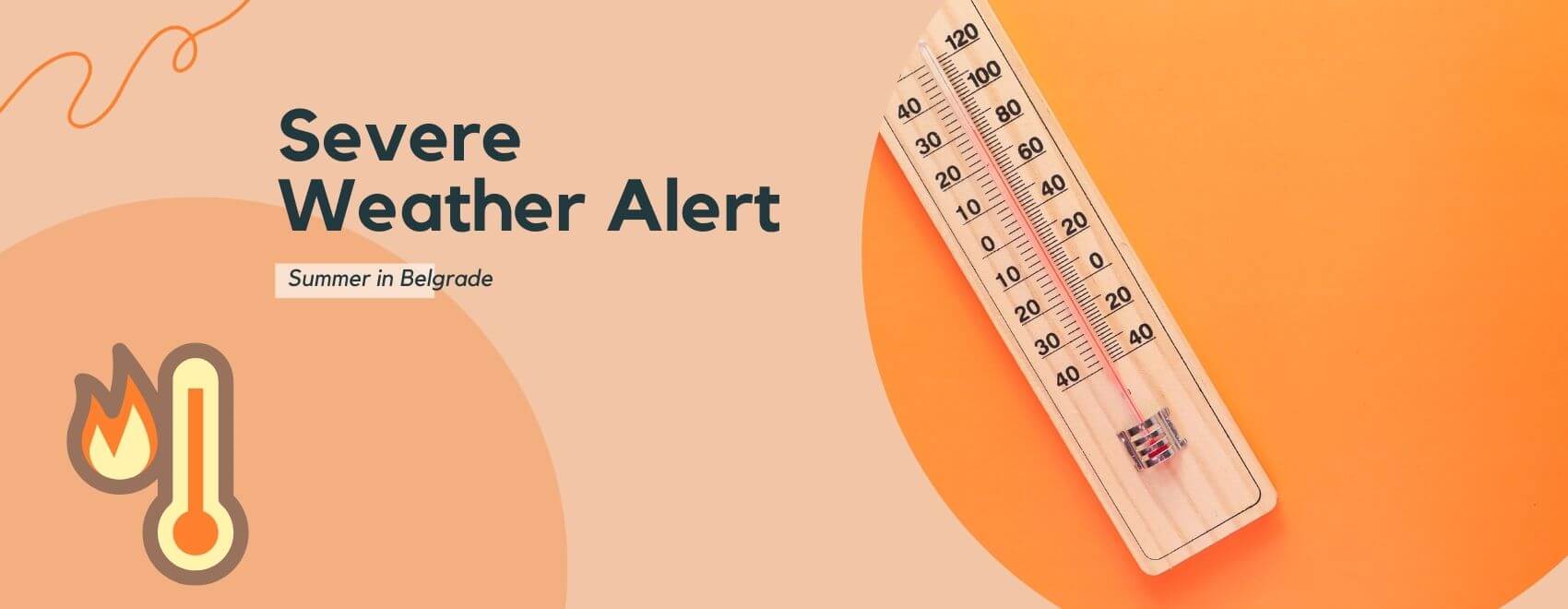Tourists and expats spending their summer in Belgrade this July are shocked by the exceptionally hot weather conditions in the Serbian capital. Was this expected for this time of year? In this article, we will explore the historical context of Belgrade’s summer temperatures, the specifics of this year’s heat wave, and offer practical advice for coping with the extreme heat.

Unbearable Heat in Summer 2024
Summers in Serbia are known for being hot and sunny, with some extremely hot days, but summer 2024 is bringing dangerously high temperatures, exceeding 35°C (95°F) for days on end.
The heat is so intense that doctors are advising people to stay indoors unless absolutely necessary, with many instances of even young individuals collapsing due to the heat. The UV index is also alarmingly high. Only early mornings and late nights after 9 p.m. are considered safe for outdoor activities.

High temperatures in the summer are not uncommon in Belgrade. For example, on July 26, 2007, Serbia recorded its highest temperature at 44.9°C (112.8°F), with Belgrade reaching 43.6°C (110.5°F). However, the current heat wave is notable for its prolonged duration of extreme heat.
Since Saturday, July 6, temperatures have consistently exceeded 32°C (89.6°F), peaking at 38°C (100.4°F). On July 16, temperatures are expected to reach 41°C (105.8°F), and the heat wave is projected to persist across the Balkans for at least another week. Even the nights are not providing much relief from the relentless heat.
Sightseeing Tips for Summer Tourists
If you’re a tourist, plan your sightseeing accordingly. Choose your destinations wisely, opting for air-conditioned indoor spaces, places with deep shade, or the beach at Ada Ciganlija. Kalemegdan Park, Skadarlija, Republic Square, and other top tourist spots are best explored at night until the weather cools down.
Weather Changes in Recent Decades
Serbia typically experiences four distinct seasons (spring, summer, fall, and winter), but in recent years, the climate has drastically changed, with rapid transitions between summer and winter, and increasingly short spring and fall seasons. Winters are milder than they were decades ago.
Additionally, Serbian residents are now facing frequent violent winds, heavy rains, and hailstorms that cause significant destruction—knocking down trees, flooding streets, and damaging cars and rooftops. This type of dangerous weather was very uncommon in the past.
The Best Time to Visit Belgrade
Like most European cities, the best times to visit Belgrade are usually in spring and fall, although the weather is always unpredictable, and each season has its unique charm. With milder winters, visiting during winter can also be interesting, especially to experience Serbian New Year and Christmas celebrations and the beautiful Christmas Market at Belgrade Waterfront.
Summer can be incredibly fun, but in a big city like Belgrade, extreme heat waves can make it inconvenient. Locals often escape the metropolis by heading to villages, the mountains, or seaside locations to refresh and relax.


Leave a Reply